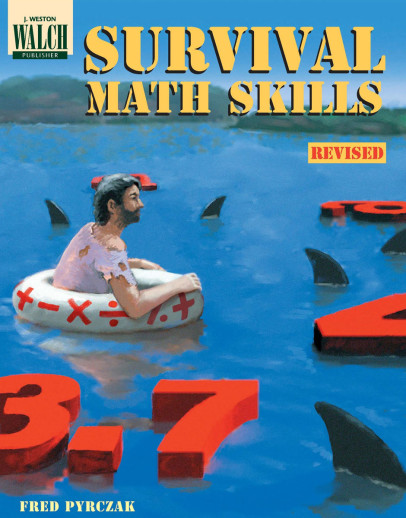We use cookies to make your experience better. To comply with the new e-Privacy directive, we need to ask for your consent to set the cookies. Learn more.
Survival Math Skills
Leasing a car, buying on credit, planning a budget - these are just a few examples of "survival math skills." This book contains 46 reproducible activities, each of which is categorized by math content and computational skill for easy integration into your math curriculum. Activities are organized into eight main topics: food costs & nutrition, transportation & vacation costs, saving & checking accounts, household budgeting, buying on credit, job benefits & income, taxes, and miscellaneous. Teacher pages and solutions are included. Although no grade level is recommended, I would recommend these activities for middle school to high school students because activities require students to work proficiently with monetary computations, percents, proportions, and decimals. ~ Anh
From budgeting for a household and estimating vacation costs to figuring out job benefits and taxes, Survival Math Skills teaches students the functional math they need to survive in modern society. The 46 short lessons include real-world scenarios, directions, quizzes, teacher notes, and answer keys. Sample topics include:
- Cost of Buying Used Autos
- Checking Account Statement
- Pay Raises and the Cost of Living
- State and Local Taxes
- Magazine Subscriptions
Survival Math Skills includes many reproductions of forms and charts frequently seen and frequently used in everyday life.


IT LOOKS LIKE IT WOULD BE GREAT FOR OUR LIFE SKILLS COURSE
I have an autistic son who does not conceptualize math concepts very well. He needs a program that will give him necessary math life skills without stressing him out over abstract math concepts that…
A good option for my pracitcal student that doesn't see why she needs to know math that her teacher(me, a competent adult) doesn't use or understand... :)
Homeschool advisor recommendation as part of economics.